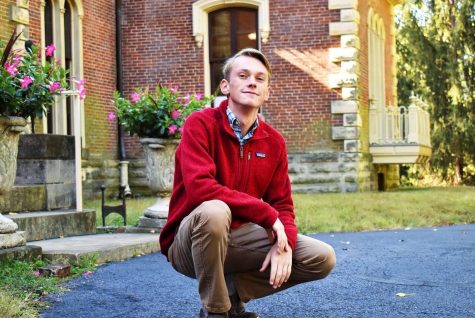Populist Rhetoric in America: Fledgling Movement or Campaign Tool?
April 7, 2021
On December 16, 2020, a subtly remarkable alliance formed in Washington: Bernie Sanders (D-Vt.) and Josh Hawley (R-Mo.) found themselves on the same side. The issue in question was a proposed second round of $1200 stimulus checks to combat the economic damage brought about by the ongoing coronavirus pandemic. Both Sanders, a self-proclaimed Democratic Socialist, and Hawley, who emerged after November’s election as a prominent member of a faction of Republicans that objected to the certification of Biden’s victory, were in favor.
The agreement over stimulus checks represents just one example of how Washington’s furthest left and furthest right can mirror one another. Since the 2016 presidential campaign, pundits have drawn comparisons between Sanders’ base and Trump’s: ten percent of Sanders’ supporters ended up voting for Trump in 2016, disenchanted by Hillary Clinton and the Democratic establishment. It isn’t difficult to draw parallels between Trump’s “drain the swamp” rhetoric and the democratic socialists’ focus on the influence of the one percent and corporations in US politics. And Senator Hawley’s pursuit of relief checks has drawn attention and even approval from some on the left.
So for all the stark contrasts that could be drawn between progressive leaders within the Democratic party and the wing of the Republican party that has embraced Trumpism, even after Trump’s defeat, it is critical to acknowledge one similarity: both sides have engaged heavily in the rhetoric of populism. They see and portray politics as resultant of an “us-versus-them” dynamic, with Sanders and his allies placing the wealthy on the outs while Hawley and those in his camp target the political establishment and the mainstream media.
This seems to echo a sentiment popularly dubbed “horseshoe theory,” which holds that the political spectrum doesn’t consist of a straight line so much as a curve, the ends of which are closer to each other than they are to the center. The theory argues that the far left and the far right have more in common than their members might like to believe. But does the commonality of populist rhetoric confirm horseshoe theory, or does it simply show that populism is politically convenient?
Dr. Kaitlen J. Cassell (‘20 Ph.D.) researches populist movements throughout Latin America. She noted in an interview that both “rightist” and “leftist” groups and politicians in those countries “use pretty similar amounts of populist rhetoric” on social media, which suggests there may be some similarities between them. However, what is important to note, Cassell continues, is the difference between the positions of populists on opposite sides of the political spectrum: “there definitely are some major differences between leftist and rightist populists–especially regarding immigration.”
One characteristic of populism is that it places emphasis on its leaders, sometimes at the expense of institutionalization. After all, a political movement that resents the establishment is unlikely to integrate itself into establishment structures. This poses a challenge for populist movements in the United States, which has one of the most firmly fortified two-party systems in the world. Enduring political power requires the infrastructure of a party to build support, define a platform, and remain influential over time. But consider what Trumpism would be without Donald Trump, or what democratic socialism would mean without Bernie Sanders. Their unique brands of populism revolve primarily around them, and despite their enormous popular influence, neither has made significant steps towards ingraining their ideas in the political establishment, precisely because their ideas are anti-establishment. Even the Populist Party of the late nineteenth century, the most organized populist movement seen yet in the United States, collapsed because its base of white, Southern farmers was too narrow, and because it lacked the political power to advertise and ingrain itself in American politics.
It is more likely that the rhetoric employed by these politicians is a strategy rather than an ideology. These strategies tend to highlight similarities between the political left and right, leading to a surface-level impression of similarity, but the gap between each side’s beliefs on other politically salient issues more or less throws horseshoe theory out the window. They appeal to those who are the most dissatisfied with our current political system, and in doing so bar themselves from gaining traction within that same system. Because it focuses attention on the individuals at the helm, populism is uniquely effective for campaigning; it put Donald Trump in office and almost made Bernie Sanders the Democratic nominee, twice. But it does not seem to constitute sufficient common ground for the construction of a durable populist party; Hawley and Sanders are bound to find themselves diametrically opposed before long.
Image: “Hawley Jackson Egg Farm” by Natureofthought is licensed under CC BY-SA 4.0








